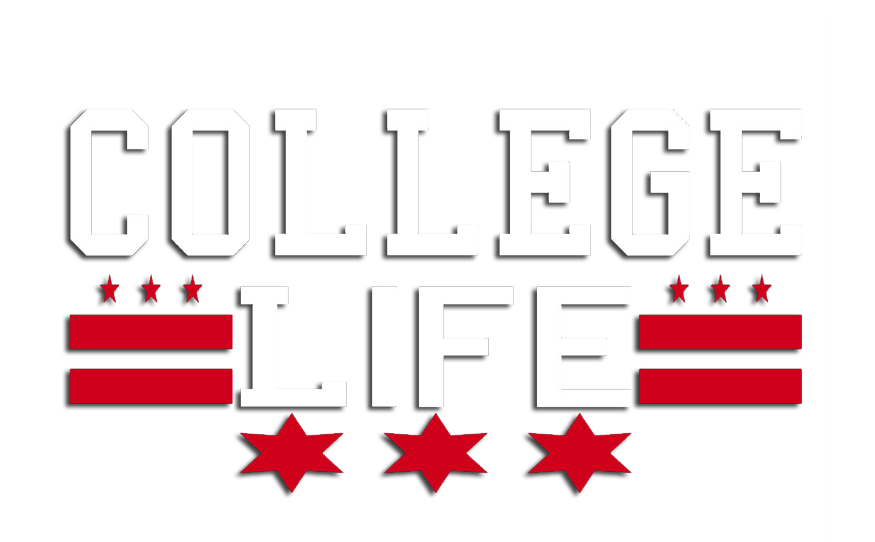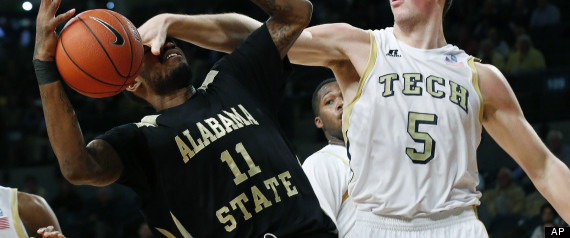The NCAA’s Academic Performance Program revamped the Academic Progress Rate (APR) data in 2011, wary of the struggles historic black colleges and universities were facing in their compilation and submission of data each year.
New rules that went into place with the 2012-13 academic year don’t seem to have helped the situation, however.
Of the 36 programs facing APR penalties from the NCAA, 28 are located at HBCU programs within the Mid-Eastern Athletic Conference (MEAC) and Southwestern Athletic Conference (SWAC).
Of the 17 colleges and universities whose athletic programs face penalties, 11 are MEAC and SWAC programs.
“The Southwestern Athletic Conference remains committed to assisting our member institutions in meeting academic progress and the metric for a successful Academic Progress Rate,” said SWAC commissioner Duer Sharp. “The SWAC will continue to work closely with the NCAA, president Mark Emmert, Committee on Academic Performance (CAP) chair Walter Harrison and the Limited Resource Institutions advisory group. We are also proud of our student-athletes who have achieved academic success by graduating and performing at the highest level during competition.”
Texas Southern, Prairie View A&M and Jackson State were the only SWAC members to escape penalties announced last week. Postseason bans, added to the penalty phase in 2011, were levied against Jackson State and Southern football programs and Grambing and Southern men’s basketball programs in that first year (charting academic progress from 2007-10), making Southern the first NCAA member ever hit with multiple postseason bans.
The next year, Texas Southern football and Mississippi Valley and Arkansas-Pine Bluff basketball were banned from postseason play. This year, Alabama State received penalties in an NCAA-record five sports, with four receiving postseason bans.
Alabama State filed penalty waivers in each of the four sports — football, men’s basketball, baseball and volleyball — and university officials will not speak on the APR situation until the NCAA addresses the appeal. Former ASU athletic director Stacy Danley, fired by the university administration last January, said he wasn’t surprised at the Hornets’ continual struggles in handling APR issues.
“The system and process they have for certification is severely flawed,” Danley said. “There were always problems with it. In fact, I’ll tell you how bad it was: When I first got there, we discovered that they had been submitting incorrect information for three years — some of it just didn’t add up. I mean, they had 1,000’s (a perfect APR score) in some sports, which is virtually impossible. So, after talking with the NCAA, we had to go back and redo those three years before we could even start work on our year. It was a ton of work.
“But the problem is the process. It’s flawed, severely. They file for an extension to turn in the APR numbers every year. We had to when I was there. It’s just chaos up and down the line trying to get information that should be there, that should be maintained. We had people there fight us tooth and nail on getting the proper paperwork and the things we needed.”
Interdepartmental e-mails obtained by the Advertiser bear out Danley’s contention that the university continues to have problems in putting together the proper paperwork, something NCAA officials recognized as a problem with HBCU programs in 2011.
Where many institutions with more funding can hire academic advisors, tutors and other people to ensure their student-athletes go to class, many HBCUs just don’t have that kind of cash on hand, a 2011 article on the NCAA’s website noted. The financial issues extend beyond the obvious lack of money to pay for academic “extras.” Some teams have to actually go out and make money for their cash-strapped athletics departments. Teams in high-profile sports like basketball and football often have to play big-money guarantee games to bring more funding to their athletics department. Those guarantee games could keep a men’s basketball team on the road — and out of the classroom — for much of its pre-conference schedule.
That would explain some of the continual problems in men’s basketball, where 11 NCAA programs, all from small conferences, are facing some type of APR penalty in 2013-14, including seven MEAC and SWAC schools. Included in those penalties are postseason bans for Alabama State, Mississippi Valley State, Grambling, Arkansas-Pine Bluff, Sun Belt member Florida International and former Sun Belt member New Orleans, an independent school in 2012-13.
It goes beyond road games, of course. HBCU programs often take “second-chance” students and other transfers who come in to play, then transfer out if they don’t see significant playing time, affecting the program’s APR.
“It’s not a secret what the problems are — they’re bringing in too many transfer players,” Danley said. “They’re just marginal students who usually don’t pan out. That was basketball’s biggest problem — they would bring in a couple of junior college transfers every year from somewhere around the country, and they’d get to Montgomery, figure out they didn’t like it and were gone after the season. That kills you. In football, it was bringing in too many just marginal students.
“We reviewed these problems after the (APR) issues in 2011. You have to tell the NCAA why the problems occurred and what you plan to do to fix them. One of the things we had planned, and I don’t know if it has been implemented, is a committee that reviews all transfer signees. I don’t know what has been done, but I know the biggest issue was that the coaches, particularly in basketball and football, refused to put up safeguards about the type of player they were bringing in.”
Danley’s point about in-house committees is an important one. Although he feels the baseball and volleyball programs may win their penalty waiver requests, the NCAA Academic Performance Program committee generally likes to have an APR improvement plan in hand before considering a waiver request.
In the 2011 NCAA article, Sharp observed that turnover with the academic staff — an ongoing problem at Alabama State — leads to lower APRs at institutions like those in his conference. When a consistent commitment to academics from every level is absent, little change results. When the presidential commitment is absent, change is even more difficult, he said.
When the NCAA released APR numbers last week, it praised the improvement of numbers at HBCU programs, saying the average numbers have improved by 15 points over the last two years.
“The presidents and chancellors made and activated a commitment to academic success,” MEAC commissioner Dennis Thomas said. He listed more dedicated resources to academic support, the encouragement of different recruiting practices and academic support integrated within the university as a whole as some of the most effective practices championed by presidents.
“We have to sustain that and improve,” Thomas said. “That’s what we’re working on right now. Have we made significant improvement? Absolutely. But we cannot say we’re there.”
At Alabama State, it appears, the administrators are doing the same things, yet expecting different results.
“The NCAA came in (in the spring of 2011) for an on-campus review to tell us what we were doing wrong, where the holes were,” Danley said. “One of the things they pointed out was that our certification process was lacking. We weren’t keeping track of the student-athletes as we should. For example, all the time on these reports, we had coaches telling us that this kid or that kid had graduated, but the registrar’s office never had the documentation. It doesn’t work like that. You can’t say that a kid graduated and not have the paperwork. The NCAA won’t accept it. We had to go to the coaches all the time asking, ‘OK, what about this guy? What about this one, where’s he at now?'”
Head football coach Reggie Barlow and head baseball coach Mervyl Melendez said in April interviews those problems were at the heart of the 2009-12 data that comprised the APR results released last week. In Barlow’s case, he had identified players who had graduated that the registrar’s office had no record of. In Melendez’s case, he said several players who had transferred out of the program had enrolled at another four-year institution, allowing the university to get back one point in the APR process, but the university had never tracked players who left their school.
VIA HUFFINGTONPOST.com






